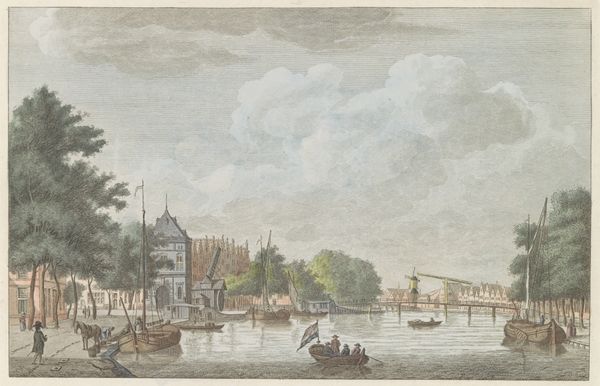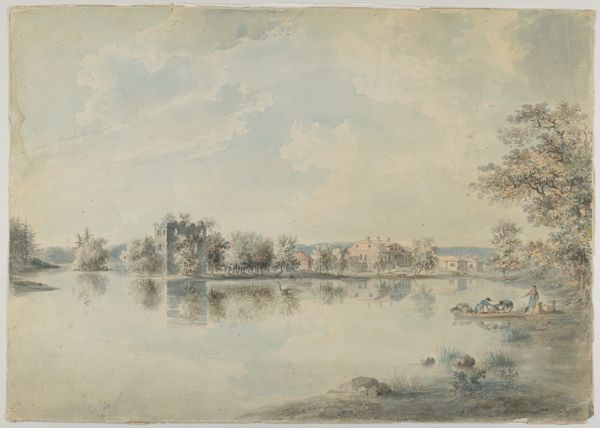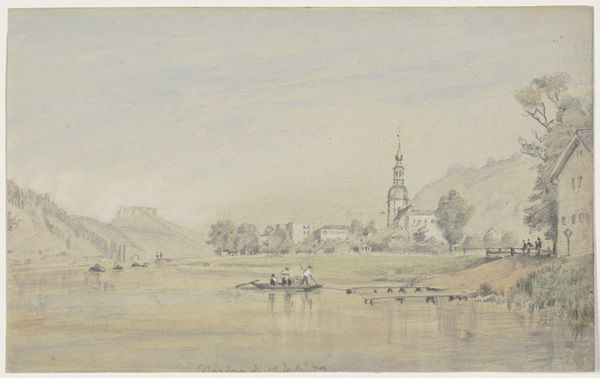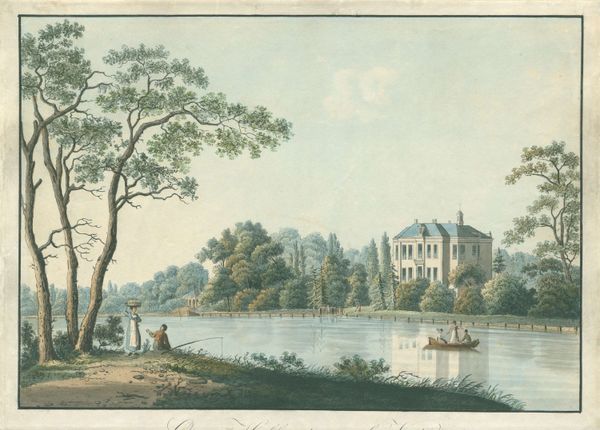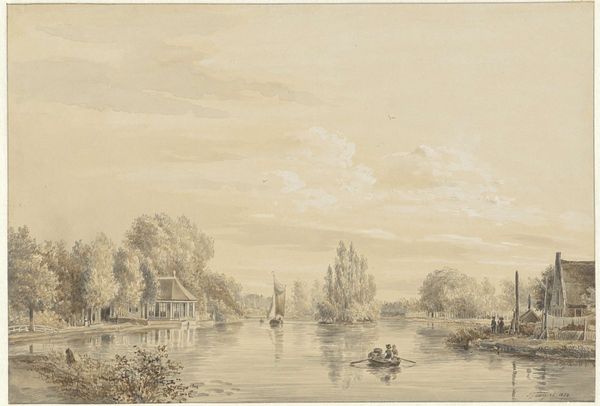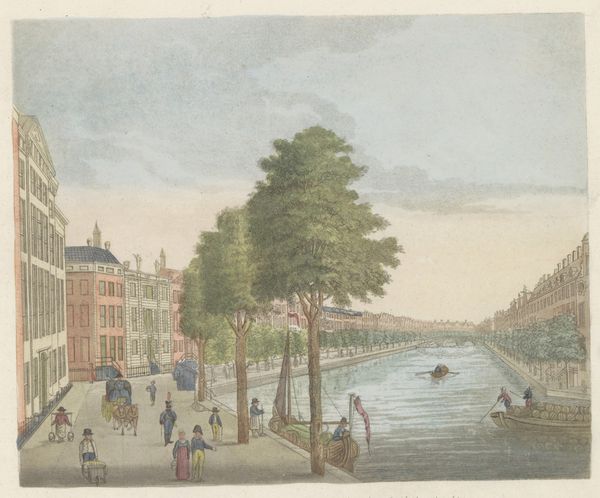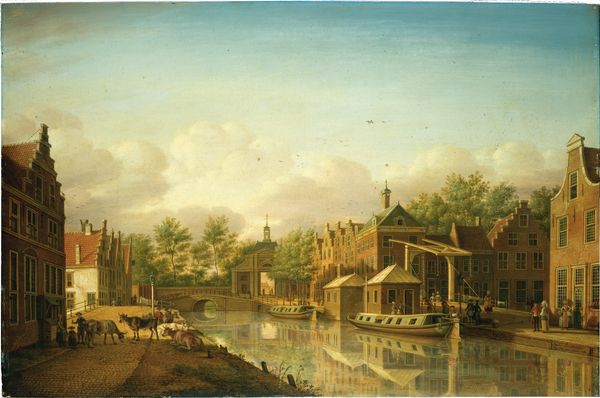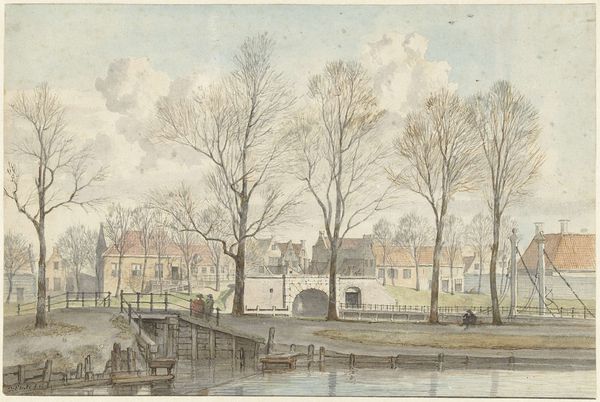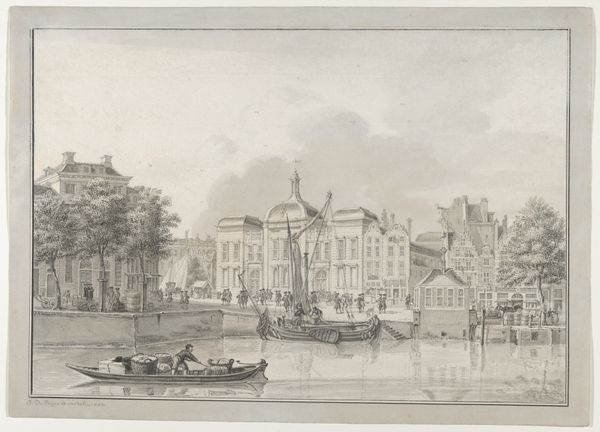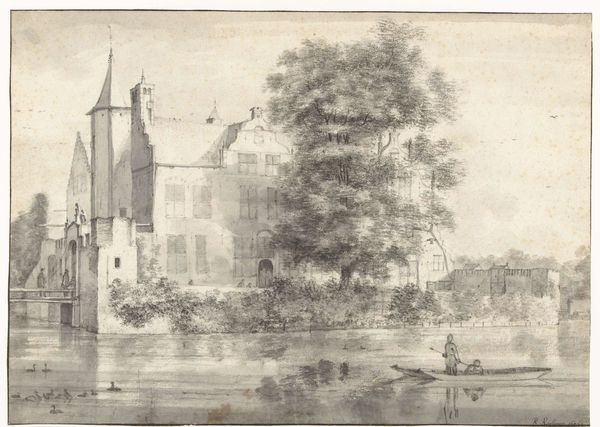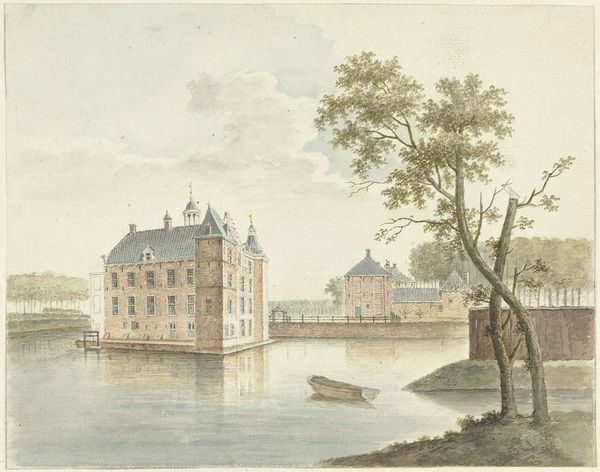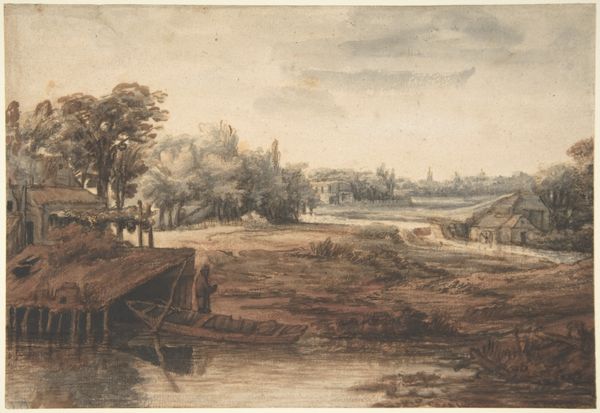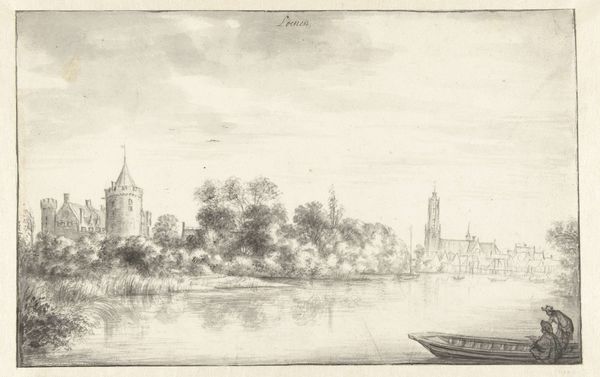
painting, watercolor
#
dutch-golden-age
#
painting
#
landscape
#
watercolor
#
cityscape
#
realism
Dimensions: height 195 mm, width 333 mm
Copyright: Rijks Museum: Open Domain
Curator: Johannes Josephus Destree created this watercolor, “Hofvijver te 's-Gravenhage,” in 1870. The view captures the Dutch cityscape with remarkable clarity. Editor: It's a strikingly peaceful scene. The soft hues and tranquil water create an almost dreamlike atmosphere. Curator: Indeed. Destree’s piece comes at a fascinating time in Dutch history. Cityscapes, especially around The Hague, reflected a rising mercantile class. We begin seeing an articulation of national identity connected with urban pride, carefully cultivated in the visual arts. Editor: You can see that pride reflected here. The architecture feels solid and established, hinting at societal power structures and stability, even if partially obscured. Look at how the shimmering water contrasts with the imposing buildings and how the figures in the boat give scale to it all. I wonder what the laborers and underclass who kept this idealized vision in motion would think about the representation. Curator: The realism adopted around this time allowed artists to depict recognizable locations, strengthening this civic identity. These weren’t just imagined spaces; they were tangible, places of daily life and commerce, made appealing to citizens and attractive to potential investors. The role of art expanded from serving royal patronage to bolstering civic and bourgeois values. Editor: It also represents power dynamics, doesn’t it? Who gets to occupy and enjoy this tranquil scene? Who has access? Those are the questions I am left with. What were the social implications of romanticizing this space in that period? Curator: The materiality, being a watercolor, lends itself well to creating ephemeral effects, capturing subtle plays of light and shadow that further romanticize this setting. These were potent displays of how Dutch cities saw themselves. Editor: Right, we must look at what’s missing just as much as what's been included. This image, so lovely on the surface, raises some challenging issues around whose stories get told, and who benefits when those in power decide how a city is portrayed. Curator: It presents a beautiful and nuanced view into how art functioned to form identities and reinforce values in the rapidly changing world of 19th century Netherlands. Editor: And for me, it becomes a critical tool to look deeper and understand what lies beneath the image, challenging the narratives and revealing the unseen stories.
Comments
No comments
Be the first to comment and join the conversation on the ultimate creative platform.
